The Body Logos Journey
People always ask me: Tammy, how did you get into this work?
Today I’d like to share with you that story:
To learn more about the Story of Body Logos Click Here

To learn more about the Story of Body Logos Click Here
BODYLOGOS = The Body’s Divine Wisdom
It is a Practice and a Lifestyle outlined in The Art of Strength: Sculpt the Body ~ Train the Mind

Aflame with Sensations
by Hiie Saumaa – BodyLogos Instructor
“Just thinking about exercising makes me feel tired.” This is how a handsome, stylish, and strong looking man in his late 40s, with an arresting smile and a magnetic personality, answered my question of what he does for exercise. “I run to catch the bus,” he added. I had just stepped out of a joyous dance class where we had moved to jazz, hip hop, pop, and waltz rhythms. The choreography was easy, with plenty of room for free expression and play. There was structure and there was freedom. Just how I like it. My whole body felt invigorated, my muscles were humming with pleasure, and my bones felt relaxed and elongated. I felt sensual and strong, energized and present. I was alive to the vibrant reds, yellows, browns, and greens of the fall trees feeding my eyes outside the window of the small café we were at; I sensed the rhythmic pulse of New Yorkers going about their Sunday business and the enticing smell of cappuccinos in the making. My mind felt fresh and ready to tackle the next writing project. “Why would you not want to feel this alive, this clear-headed, this animated by movement, and this much in love with life,” I wondered, wide-eyed, in response to his answer.
I deferred judgment. There are many ways to feel alive, many ways to be present with the body. We have different needs for movement and exercise at different times in our lives. After more than 15 years of taking dance, fitness, and strength training classes and working as an instructor, movement has become such an integral part of my life that “to exercise or not” is not a question. The question is, sometimes, “when” and “where” and always “how” – how to work with the body with awareness.
But his answer did make me pause. He probably would not join me in the dance class that I had just taken: convincing men to express themselves through free movement in a class full of women merits an article in its own right. But perhaps strength training, lifting weights? In my mind’s eye, I traveled back to the weight room of the gym I had left a few minutes earlier. Grunts, wrinkles on the face, bared teeth, weights slamming to the floor, bulging veins, huffing and puffing, collapsed chests, rounded shoulders. People building tension in the body. As if we are at the gym trying to conquer the weights. To show we can do more. And more. Push harder. Stronger than the metal. Smarter than the dumbbells. Or, perhaps fearing boredom, we surround ourselves with words and images – screens, phones, movies, and magazines. The mind, after all, should not be idle. Especially on the treadmill or in the midst of yet another set of bicep curls. Indeed, just thinking about all of this makes me feel tired too.
“Strength training can be a study in sensation, imagination, and deep connection to the self,” I wanted to tell my attractive acquaintance, as he rushed out, careful not to spill his coffee. We live in sensation but are not very aware of our sensations. Our awareness of sensations heighten during times of romance: your fingertips tracing the contours of your loved one’s skin, her exhale touching your cheek, the weight of her head on your shoulder, the density of her thigh muscles meeting the pressure of your palm, time standing still for the two bodies locked in a tight embrace, the rhythm of her quickened heartbeat clearly felt through layers of fall clothing, yours and hers. We carefully listen to, decode, remember, and luxuriate in physical sensations during these times. Injuries also heighten our sensitivity toward sensation – we feel the pain at the back of our heels for months after Achilles tendonitis and the newly inserted metal aid in the hip after a broken femur disrupts our graceful movement for quite some time.
My friend at the coffee shop was long gone but I wanted to sit down with him and tell him how working with dynabands, the pulley system, weight machines, and free weights can be pleasurable, mindful, and relaxing. I see strength training as a time to cultivate my understanding of the language of the body. I have learned this approach through the technique of BodyLogos, developed by former Broadway dancer and Tao Minister Tammy Wise since 1997.
I imagined that my coffee shop friend was still there, sitting on the other side of the table from me. I imagined that he was willing to take 20 minutes of his time to listen to me. In my imaginary dialogue, I tried to conjure up some scenes from my exercise practice. “Let’s take a simple abdominal crunch, for example. So much to learn about sensation here! As I lie on the back, knees bent, feet flat on the floor, and lift my torso, I try to feel the weight of my head in my hands. This takes practice. Instead of my head leading and my neck pulling, my abdominal muscles take over. Once I allow my head to become a weight that the abdominal muscles carry, I begin to feel how the murmur of my thoughts quiet down. My mind starts to relax. Trusting myself into the care of my own ‘gut’ feels good. I start to hear the distinct voice of these muscles – they quiver and make a sound, like a purr, as they contract. It feels like an awakening of an inner engine. I discover the immense strength of these muscles – I can continue the crunches for a while. But I also discover the immense tenderness of the trembling of these muscles. It feels like witnessing the vulnerability of someone showing themselves fully, being naked, and speaking with honesty and truth. As I stop the exercise and move back into my world outside the gym, I continue sensing these muscles’ presence, their support: they hold me up.”
Or perhaps I could tell him about how I experience a chest press? I continue my imaginary conversation: “I lie on the back again, knees bent, feet flat. My arms are out to the side and I am holding weights in my hands. I lift the chest and extend my arms up and carry them down. This exercise happens in the region of the heart, a powerful area for emotions. Can I take an imaginative leap and picture that I am lifting my heart toward someone or something I love as I am doing this exercise? This ability for the chest to lift and go ‘outward’ is embedded in the English language, in phrases such as ‘my heart goes out to you’ or ‘I sing my heart out.’ As I keep reflecting on this, an image of a particular person emerges in my mind’s eye. I keep holding on to that vision as I feel my heart moving toward him. I realize my heart is asking that I apologize in front of him for being neglectful. After a while, another image occurs – my current writing project. In my imagination, I see that instead of the weights, I am holding in my hands the book I am trying to write. The writing might be in a muddled phase – I still do not see the arc of this book clearly – but underneath it, I know, is my love for writing and what I do. As I lay the dumbbells to rest, in the tingling of my chest muscles, I feel my heart open. I feel more connected to myself but also to my work, the people I love, and the world outside of me.”
I wanted to convince my friend that the dumbbells are not “dumb” – they can teach us how to relate to ourselves and to others more deeply. Strength training does not have to be boring or depleting – it could be a life-long education in sensation and in awakening compassion toward oneself and others.
I had finished my chai and it was time to move on to my next experience of the day. I stepped out of the café. I felt the ground underneath the soles of my feet. I felt my ribcage expand as I inhaled the crispness of the fall weather. I felt the freedom in my throat as I lifted my eyes to marvel at the dramatic interplay of the dark blues, whites, and pinks in the evening sky. I thought back to my charming friend who dislikes exercising so much. “Maybe one day he’ll give it a try.”
Get your copy of The Art of Strength: Sculpt the Body ~ Train the Mind today!
Balboa Publishing
with a 5% gift to Safe Horizons
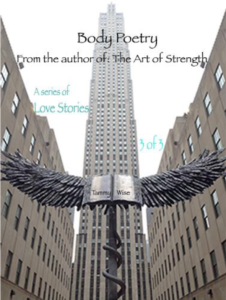 I am a body of knowledge, both Divine and human, that can heal itself beyond the holding patterns of its wounds. And I want to offer that gift of healing to you.
I am a body of knowledge, both Divine and human, that can heal itself beyond the holding patterns of its wounds. And I want to offer that gift of healing to you.
I am an antenna for the Divine, and I matter beyond what is yet fully understood.
The mind’s narcissistic compulsion, however, runs deep in my veins.
I understand the silent scream that lives inside you. I feel the isolation of having no protector. I anguish, along with you, to feel relevant in love, limits, and life.
It takes pain and suffering for the mind to stop asking more from me and to listen, and even then it can judge my limitations as weak or disruptive instead of insightful and intelligent. The mind’s need-to-know nature is more like a need-to-be-relevant chase that steamrolls over my basic need—your basic need—to belong and be loved.
There are many reasons I feel irrelevant. I mean, the mind has led me toward artificial light, artificial food, even artificial friends so it can feel in the know and in control. All of this artificial nourishment does nothing for me but make me feel starved, unimportant, and inferior to the mind’s clever antics.
The greatest reason I feel insignificant, the most personal “dis,” is the mind’s constant message to “Get over it!” Whatever it is is less important than the mind’s chase. The implication is that my feelings don’t matter; I, the container of those emotions, don’t matter. As if mind over matter was smarter than the matter of fact!
Fact is, my intelligence is in my structure, my ability to channel what is Divine and true, as well as express unresolved emotional tension. As a physical energy channel, I bring presence and connection into a human experience, felt as a peaceful knowing or guided sight. Through this physical alignment with source energy, I can witness emotions from an expanded state, rather than being consumed by them.
It is time to gain agency of me––your body’s intelligence––and be conscious of the energy download that radiates through me, aligning you with the life you want.
It is time to value me, listen to my cries and messages, and respect what I am experiencing in real time!
It is time to expand into your hopes and dreams from the inside out.
You, as a human being, are an antenna to the Divine––a spiritual-physical being.
My brand-new book––The Art of Strength: Sculpt the Body ~ Train the Mind––is a love letter to your body. Its practical guidance will change the way you experience your physicality. You will begin to feel for it, rather than think for it, and to gain greater awareness of the Universal energy source empowering it.
Get your copy of The Art of Strength: Sculpt the Body ~ Train the Mind today!
Balboa Publishing
with a 5% gift to Safe Horizons
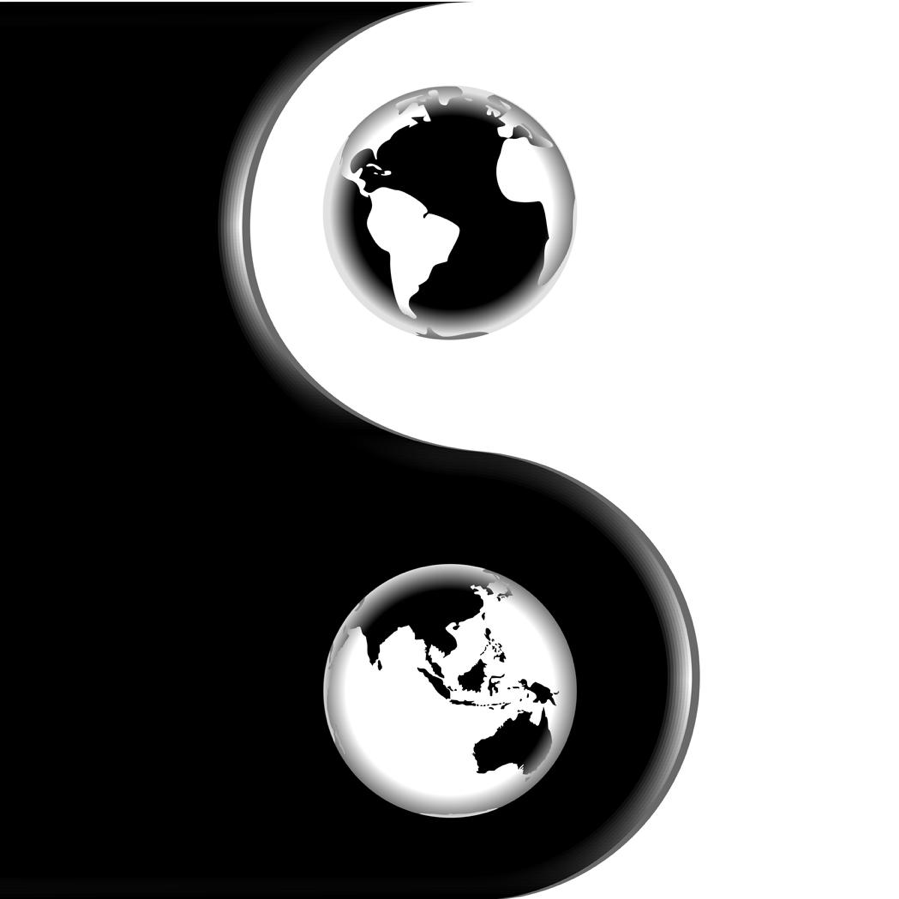
Crafting Your Workouts and the Life You Want:
Part 3 of The Art of Strength – The Design Phase
Typically, your doctor is the one to ask you, “Where does it hurt?” But I believe we should ask ourselves this same question, and take time scanning our body for a detailed answer. Because once we can pinpoint where it does, in fact, hurt—be it in our legs or back, heart, or soul—we can begin to soothe the suffering and find our strength again.
Your life doesn’t have to be characterized by your pain. Your blocks and tensions, insecurities and weaknesses don’t define you, and it’s possible to move through or clear away these obstacles that stand in the way of you freely connecting with your aspirations.
The final pages of The Art of Strength: Sculpt the Body ~ Train the Mind give you the permission and encouragement to take time for the small things in a world that tells us there isn’t any to spare unless it’s for the big picture. These chapters are a message from me that you deserve to take the time to notice how you stand on your feet, where your shoulder blades rest, and if your core muscles give you the support you need. After all, it is these subtleties that generate the tension in your body, lead to poor posture, and ultimately place you in a life you may not wholly desire.
To design your life is to listen to your body’s wisdom and treat it with compassion; doing so effectively undermines the message that pain is acceptable. It gives you the chance to say goodbye to tension and hello to ease, peace, and, yes, strength.
What Does All This Have to Do With Workouts?!
Part 3 shows you how to holistically appraise the condition of your strength. In other words, to discern “where it hurts.” Are you in physical pain? Feeling emotionally drained? Experiencing chaos in your day-to-day routine, or just generally feeling disconnected from your life? This appraisal gets at the root of your holding patterns, or the areas in which you aren’t standing in your strength.
No matter where your tension is rooted, these expressions of misalignment create a consistent and recognizable pattern. By tracking this pattern’s nature, you can establish a general framework for crafting your ideal mind-body strength-training workout.
Part 3 of The Art of Strength helps you design workouts suited to your specific condition, so that you can design the life of your dreams. Find out:
When you work out, each exercise is a unifying tool for your mind, body, and spirit. According to Tao values, the backbone of the BodyLogos philosophy, mind and body are equal but not the same. Where the body’s intelligence is in feeling and expressing emotion, the mind’s intelligence is in collecting information and thinking. From a place of harmony between mind and body, you can access the spirit’s supreme intelligence, and positive change is possible.
Resolving inner conflict—clearing holding patterns—avails you to a meaningful purpose that leads to true happiness; it connects you to your life’s path. Releasing the tension that keeps your body, mind, and spirit separated is what allows you to permanently forgo a reactive pattern with ease.
I hope these summaries have you intrigued about BodyLogos and leave you ready to embark on the BodyLogos practice to influence your posture, workouts, and life. Unlike other strength-training programs, BodyLogos asks you to approach the experience of strength from your deepest vulnerability and desires, because to stand in your strength is to have the courage to stand in your frailty. As I hope you can now see, strength truly is an art, and it is my wish that you’ll allow me to help you paint a new, more powerful portrait of yourself.
Get your copy of The Art of Strength: Sculpt the Body ~ Train the Mind today!
Balboa Publishing
with a 5% gift to Safe Horizons
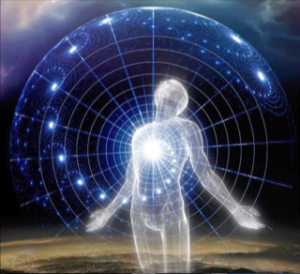 You workout religiously. You are totally committed to becoming strong!
You workout religiously. You are totally committed to becoming strong!
One day your trainer, or gym mate, notices that you’re getting stronger. With enthusiasm they tell you, so you know that your hard work isn’t in vein. In that moment of celebration, I regularly witness the encouragement combatted with a “not strong enough” retort.
When nudged a bit further, you might feel the fear that acknowledging success will jinx further success. If you feel you’ve arrived, you’re afraid you’ll stop working hard at “it” and lose “it.”
While this may be a very real feeling, it’s a fear-based reaction, and not the whole truth.
What does stepping into your “it”—your strength—actually mean: looking a certain way, feeling unwavering confidence, knowing what you want in life and how to get it? Owning your strength means stepping into a definition of strength that asks you to stretch every aspect of yourself: body, mind and spirit.
Conscious engagement with your strength is necessary to define it. Strength training puts you face to face with everything you resist and on top of that challenges you in the mind-body areas in which you are weakest.
Is strength just the ability to press a loaded barbell, or does it include celebrating the doing? Does strength mean finishing in the top ten of a marathon, or does it include congratulating your opponents? Is strength measured by your commitment to training or your commitment to wellbeing?
Your experience with resistance––dumbbells, barbells, free weights, pulleys or emotions, reactions, beliefs––will be what helps you define the 3-dimensionality of strength.
Use your physical training to holistically define your strength’s end goal or you will forever be chasing “it.”
The Art of Strength: Sculpt the Body ~ Train the Mind, my book/3D-video learning system guides you toward finding your strength within and without.
BODYLOGOS = The Body’s Divine Wisdom
It is a Practice and a Lifestyle outlined in The Art of Strength: Sculpt the Body ~ Train the Mind
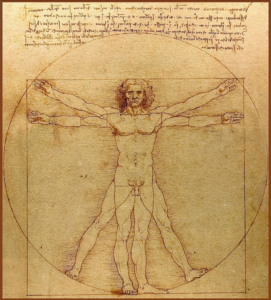
BODYLOGOS AT WORK FOR YOU:
Getting Clear on What You Need in your Workplace
by Donia Elizabeth Allen ~ BodyLogos Instructor
Several years ago an exceptional professional opportunity came my way through a friend. The position was in a new field and industry, and I was lucky to get it. I jumped at the chance.
The position itself was also new, and I reported to a member of the senior leadership team. My charge was to manage projects related to preparing this organization for an ambitious change process that included a capital campaign and building project. The unusually talented and hard-working staff was more than capable of handling these projects but even with a brilliant mission and extraordinary team change isn’t easy!
One of the many changes involved a member of the senior leadership moving to a smaller office so that a colleague and I could then move into, and share, her larger office. There was a lot of grumbling: who was going to take the measurements and order the furniture, why did people have to share space, why couldn’t everyone stay put until we all relocated out of the space for renovations?
In the meantime, I was sitting at a tiny work-study desk with no shelves, drawers, or privacy. It was very clear to me that there was no way I was going to be able to manage the projects I’d been tasked with without a more functional workspace. I was the most recent hire, in a new position, in a new industry: I had the most to lose if I didn’t perform well, and a lot to prove.
Fortunately, I had been practicing Bodylogos for a while by this time. I was in the habit, through active meditation, of checking in with myself regularly, asking how I felt about people and situations, and trusting the answers that came to me (abdominal work); with clarifying what I wanted and needed to bring into my life to feel fulfilled and successful (biceps work); and with determining what I needed to practice letting go of (triceps) while maintaining my integrity (shoulder work) and a sense of comfort and safety (buttocks and back muscle work).
“Sculpt the Body ~ Train the Mind,” Bodylogos’ vision statement, makes clear that it’s a physical practice designed to strengthen muscles, and promote postural integrity. But Bodylogos also encourages us to continually explore our psyche-muscular blueprints, to be curious about the relationship between our physical and emotional needs, and our aspirations. As I became more comfortable doing Bodylogos workouts I got better at identifying my strengths and weaknesses, and developing strategies to meet my goals. Over time, I began to practice Bodylogos in my workplace – identifying strengths, weaknesses and opportunities, and developing strategic ways of addressing situations within the organization and relationships with colleagues, too.
With the Bodylogos approach in mind, I got clear that what I needed most strategically in that situation was a functional workspace, and so I offered to take the lead on this relatively small office move. As soon as I volunteered, there was more, and louder grumbling: you’re new, this isn’t fair to you, so-and-so ought to be handling this since it was their idea, it should have been done before you even arrived. It was tempting to join in the kvetching: it was a way for me, as the new person, to bond with colleagues who’d been there a while and also to blow off a little steam as I was anxious about the move, too. But I got clear quickly about this too, specifically, that joining in the complaining wasn’t going to get me what I needed (a more functional workspace), and could potentially put me at risk if it involved complaining about senior leaders and it got back to them.
So I engaged facilities to help me take measurements and make decisions about furniture and packing. I engaged the technology manager to determine to move computers, and other electronics. And I communicated with everyone in the suite affected by the move. By the end of the process I had gotten exactly what I needed: a functional workspace, and a supervisor who was delighted by how smoothly things went. And, crucially, I avoided getting caught up in power struggles and a cycle of bonding through complaining with colleagues, and I stayed true to myself and my values.
I went on to have a stellar professional experience that changed the course of my career, and led to several very dynamic collaborations with colleagues that continue to this day. During this time I also realized the extent to which Bodylogos had become an integral part of my life, and decided to become a Bodylogos instructor so that I could encourage others to try the Bodylogos approach to move their lives and energy in new directions.
Get your copy of The Art of Strength: Sculpt the Body ~ Train the Mind today!
Balboa Publishing
with a 5% gift to Safe Horizons
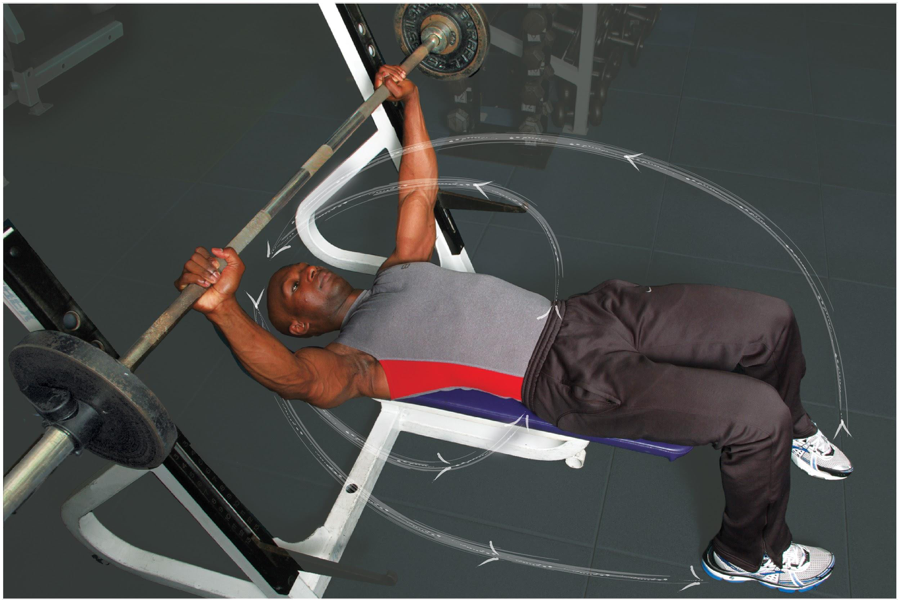
Take Command of Your Vitality:
Part 2 of The Art of Strength: Bringing the BodyLogos Philosophy Into the Gym
“Get More Energy Now!”
“Boost Your Energy Levels Instantly!”
There’s no shortage of online articles with headlines that promise to put more pep in your step. I actually share their agenda: I want you to have more energy. But, I want you to have more than just enough energy to get through the work day, or the hustle of kids’ schedules, or the mountain of life’s other demands.
I want to help you restore your Energy System—to recover your energy’s quality—in turn helping you reduce stagnant tension, increase energy flow, center you in your Spirit Self and, of course, develop muscular strength too. Then, you will be able to take on the day and your life, to create the person you want to be in and the world you want to live in.
That’s what Part 2 of The Art of Strength: Sculpt the Body ~ Train the Mind is all about, and what it offers is well beyond the tips you’ll find in a quick Google search. You see, energy is so much more than the external momentum that powers you from sunup to sundown. It’s more than what powers you physically through workouts and mentally through problem solving. Energy’s subtle force aligns the power within you with the power of this great big universe.
How BodyLogos Differs From Traditional Strength Training
External momentum places your attention on the destination of an effort, rather than in a movement’s energetic and muscular origins. This momentum throws the resistance away from you rather than connecting you to it. Compared to the internal momentum generated by Energy Orbits—which balance muscular contraction and release—external momentum is a more superficial and uneven focus on either muscular contraction or release. This is reckless in strength training.
BodyLogos is mindful strength training that helps you unite with resistance, whereas traditional methods strive to triumph over it. They leave no room to experience equipoise, or stillness in the middle of challenge.
In this way, traditional strength training is disconnected from life’s content and meaning—disconnected from having a tangible impact upon our existence. This kind of sterile effort can become mechanical, done by route and without truly engaging the senses or the intellect. By connecting strength training to our ability to balance relaxation and hard work, we bring strength into the very center of our existence. It becomes what we are, rather than what we are chasing after.
As I see it, strength is a combination of letting-go of and holding on to our connections with life. It’s not about the amount of weight you lift—it’s about how you connect with that weight.
Part 2 of The Art of Strength gets you working out according to the principles of the BodyLogos Philosophy discussed in Chapters 1-6. Discover:
The book gives you exclusive access to videos that help visually guide you through these exercises.
Together, we’ll take a deep look at the Five Energy Patterns (that reflect eight Energy Orbits): Coming Home, Determined Power, Creating Forward, Suspending Judgment, and Universal Connection. Then, we’ll focus on the body’s muscle groups—abdominals, chest, upper-back, shoulders, biceps, triceps, quadriceps, hamstrings, inner thighs, calves and buttocks—exploring the independent character and nature of each muscle group through the 5 Element Theory (the cyclical flow of energy I’ve been writing about!). And, finally, we’ll learn to integrate energy flow into traditional strength-training exercises.
Our power to create the life we dream about, physically and mentally, is in the subtle projection of our Life Force. Remaining conscious of the pattern of energy that exists in all movement, physically and mentally, assures our position on the planet and gives us a sense of belonging. The greater our command is of these forces at work, the greater our command is in creating our life. How we carry ourselves energetically affects how we feel about ourselves and how the world feels about us.
Get your copy of The Art of Strength: Sculpt the Body ~ Train the Mind today!
Balboa Publishing
with a 5% gift to Safe Horizons